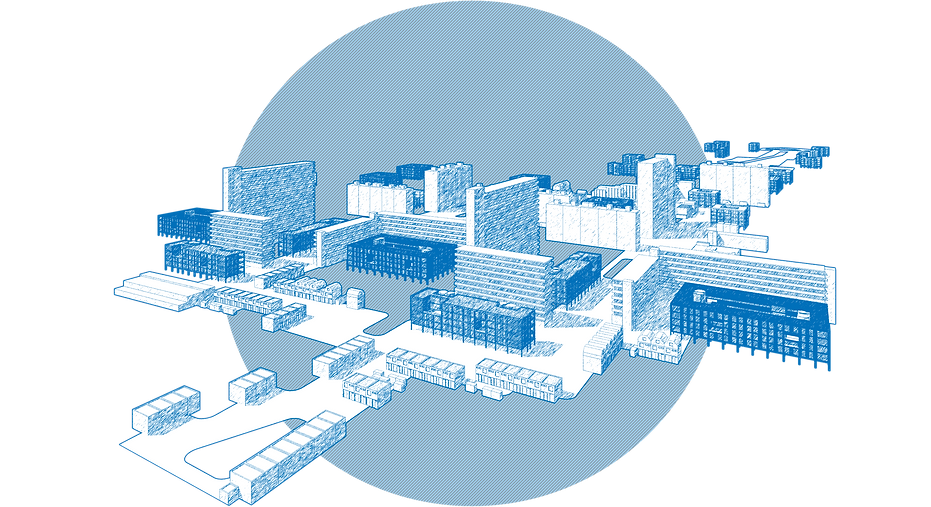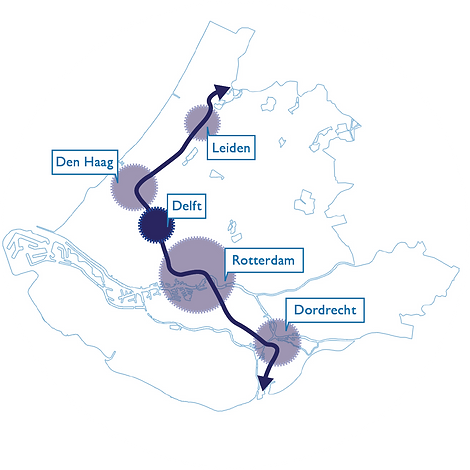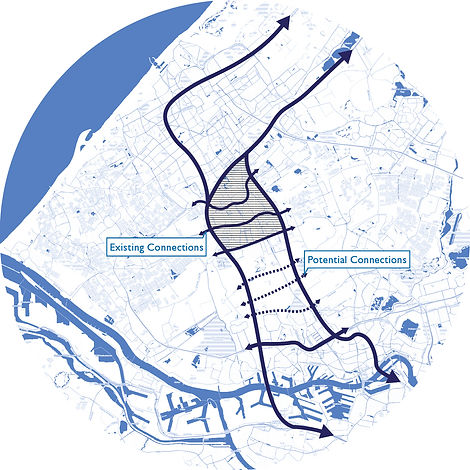top of page

Stylostixifying Delft
Location: Voorhof, Delft, The Netherlands
Project Team: Osman Ural, Hamed Khosravi
The city of Delft exists in a bottleneck of two metropolitan areas: Den Haag and Rotterdam. As they grow larger over time, Delft will need to compete in order to prevent becoming a suburban area to one of the metropolises. In order for Delft to take it’s rightful place within the Great Urban Necklace, the city needs to become better connected, more dense, and more urban. One way to achieve this would be to implement strategies for Delft to transform into a knowledge city! It already supports one of the world’s most robust universities, but the city most develop in ways which prevent trends of commuter traffic and encourage permanent settlement in Delft itself.


The ideal place for new development would be in the south of Delft, where the footprint density of the current urban texture is low. There is also an underutilized NS train station which could spur growth in the surrounding neighborhoods. Another reason why this location is suitable is the close proximity to the TU Delft Campus, which would require this area’s East to West circulation strengthened. Not only would this provide a better connection between the residential neighborhoods and the university, but strengthen the connection along the Great Urban Necklace.


This project proposes creating a Spine-Loop which will connect the residential areas to the university. Not only will it bring these two urban functions together, but it will also inject a more urban form of street life which will be sustained by two strategies. One strategy is to create new housing units within the neighborhoods of Voorhof and Buitenhof. The locations for these new buildings are found in-between the large scale housing projects within the current urban texture in the neighborhoods. The funds created by the new developments would help fund retrofitting the older housing blocks so that they are more environmentally friendly, and also change the program of their entrance floors to more public functions.






The second strategy is to implement a masterplan in the industrial zone between the housing areas and the university area. In order to make this happen, a phasing method needs to be implemented to make the area habitable and feasible. First, the brownfield needs to be cleaned through natural filtration processes. Secondly, the NS station needs to be upgraded to meet the demands of the new influx of residents. Thirdly, the Kabelfabriek needs to be re-purposed as a cultural and economic hub in which offices can be rented, cultural events be had, and educational services delivered. While these projects become complete, new residential blocks can be developed and inhabited. This growth will bring new life to the city, attracting students and working professionals alike. Also because of the new opportunities, more of these inhabitants will decide to make Delft their permanent home!



bottom of page

